Medical devices are characterized by large differences between products, including simpler products such as hemostatic sponges and disposable syringes, as well as complex large-scale equipment such as medical magnetic resonance imaging equipment (MRI); basic fields involving electronic technology, computers Technology, sensor technology, signal processing technology, biochemistry, clinical medicine, precision machinery, optics, automatic control, fluid mechanics and many other aspects. Therefore, the development of medical devices is greatly affected by the development level of basic industries in the corresponding countries. The United States, Europe, Japan and other places have long been in the leading position in the world due to the developed industrial base and years of technical accumulation. Let's take a look at the related content with Xiaobian.
On October 28, 2017, the publication of the "China Medical Device Industry Development Report (2017)" by the China Drug Supervision and Management Research Institute, the Social Science Literature Publishing House of the Chinese Academy of Social Sciences, and the Editorial Board of the Medical Devices Blue Book was held at Held in Beijing. According to the report, from the overall perspective of China's medical device industry in the past few years, China's medical device industry has developed rapidly. The growth rate of the main business income of production enterprises above designated size is 11.66-22.20%, which is significantly higher than the growth of national economic development in the same period. The research and development of high-end medical devices is promising, and innovative products are accelerating.
Industry market size has maintained rapid growth, with CAGR exceeding 18% in 2011-2017With the improvement of the living standards of our residents and the awareness of health care, the demand for medical device products continues to grow. Affected by the national medical device industry support policy, the domestic medical device industry has entered a stage of rapid growth.
In 2017, the market size of China's medical device industry reached 523.34 billion yuan, and CAGR reached 18.21% in the past 6 years. However, China's per capita medical device expenditure is much lower than that of developed countries. In developed countries, per capita medical device costs are more than 100 US dollars, Switzerland is as high as 513 US dollars, and China's per capita medical device costs are only 6 US dollars. With the aging of the population, the growth of per capita disposable income and the strong support of the policy, there will still be room for growth in the medical device industry in the future.
Chart 1: 2011-2017 China's medical device industry market scale change trend chart (unit: 100 million yuan,%)
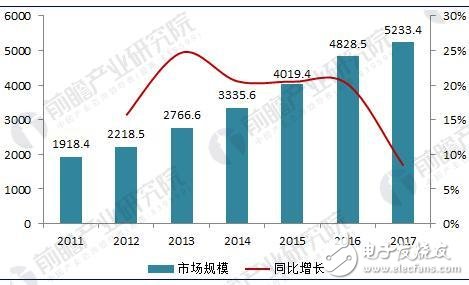
According to preliminary investigations, the medical equipment that can be produced in developed countries can basically be produced in China. However, China's high-end medical equipment still has a big gap in terms of overall quality and technical level compared with similar products in developed countries. It is still necessary to make great efforts to catch up with the high-end medical equipment technology level in developed countries. Some products have serious homogenization. For example, there are more than 200 enterprises producing infusion sets and syringes in China, and there is no obvious difference in product quality and performance between different enterprises. As a result, the localization rate of products in the field of high-end medical devices is low.
Therefore, the localization of medical devices and import substitution are the key directions encouraged by national policies. In May 2015, the State Council issued the "Made in China 2025", which focused on improving the innovation capability and industrialization level of medical devices, focusing on the development of high-performance medical equipment such as imaging equipment and medical robots, and advising the decomposing of high-value medical consumables such as blood vessel stents. , mobile medical products such as wearable and remote medical treatment. In addition, the Health Planning Commission issued a number of policies to support the localization of medical devices in China.
Chart 2: China's medical device industry related localization policy since 2015 (partial)
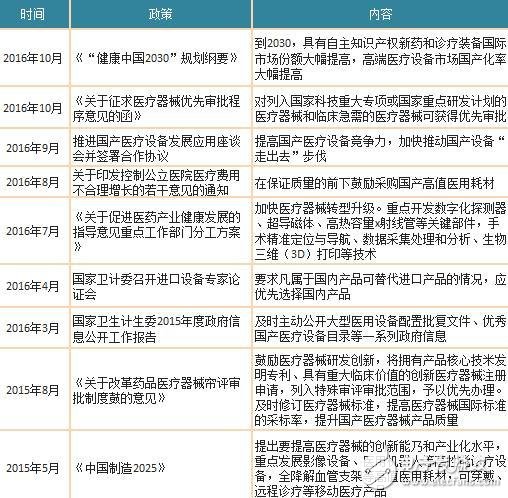
At present, in the medical device industry market in China, the high-end medical device market accounts for only about 25%, and most of the market is dominated by foreign manufacturers. Most of China's enterprises are still in the middle and low-end medical equipment field, and the market size of the middle and low-end market accounts for about 75% of the entire medical device market in China.
Figure 3: China's medical device industry segment market pattern (unit: %)
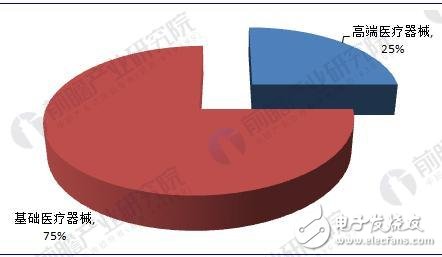
As we all know, in order to make a difference in the field of high-end medical devices, companies must increase the level of R&D investment. However, in 2016, the top 20 medical device companies in China had a total operating income of 50.319 billion yuan, R&D investment of 2.27 billion yuan, and R&D investment accounted for an average of 4.51% of operating income.
According to the information of listed companies in developed countries: Johnson & Johnson Medical Co., Ltd. invested 1.548 billion US dollars in research and development expenses in 2016, accounting for 6.2% of sales in the current year; Medtronic invested US$2.2 billion in research and development expenses in 2016, accounting for 7.7% of current sales; Philips Medical In 2015, the company invested Rmb 948 million in research and development, accounting for 7.9% of the sales in the current year. Siemens Medical Co., Ltd. invested Rmb 1.846 billion in 2015, accounting for 13% of the sales in the year. China's medical device industry is seriously under-resourced, the entire medical device The total cost of research and development in the industry is not as much as the R&D investment of a large multinational company, which affects the innovation and development of China's medical device industry.
Figure 4: China's medical device industry R & D investment and foreign companies comparison chart (unit: billion US dollars,%)
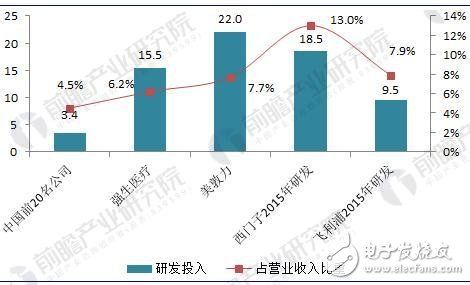
According to the use of the scene, China's medical equipment is divided into medical medical equipment and household medical equipment. Among them, medical medical equipment has an absolute dominant position in the entire medical device market. In 2017, the market achieved sales revenue of about 380.5 billion yuan, accounting for 72.7%. The home medical equipment is in a weak position. In 2017, the income reached 142.9 billion yuan, and the industry market accounted for 27.3%.
Figure 5: China's medical device industry R & D investment and foreign companies comparison chart (unit: billion US dollars,%)
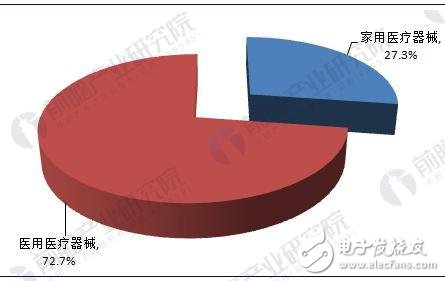
However, according to the "China Medical Device Industry Development Report (2017)" forecast, in the future, with the in-depth development of the Internet and the improvement of people's health awareness, home medical devices will accelerate growth in the next few years. The main household medical device products include: diagnostic and monitoring instruments represented by blood pressure monitors, blood glucose meters, stethoscopes, etc.; therapeutic equipment represented by household personal hemodialysis machines; medical beds and intelligent workstations that improve the quality of life of patients are Representation of rehabilitation equipment, etc.
Gas Stove,Single Burner Gas Stove,Tempered Glass Panel Gas Stove,Stainless Steel Gas Stove
Shandong Sangle Group Co.,Ltd. , https://www.sangle-group.com
